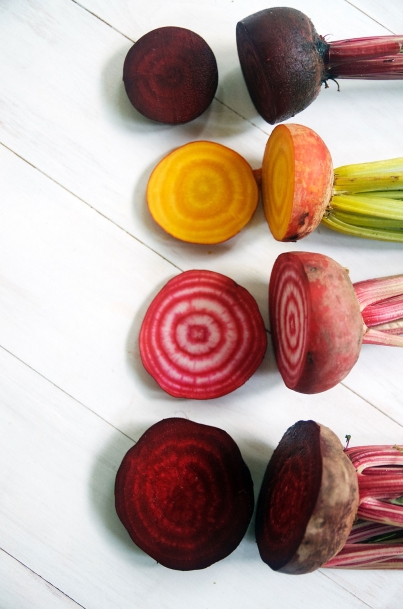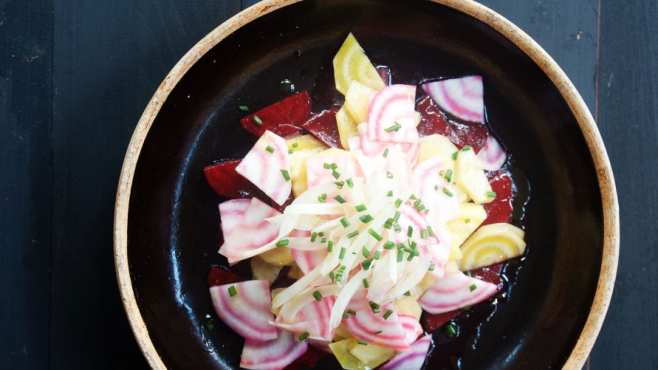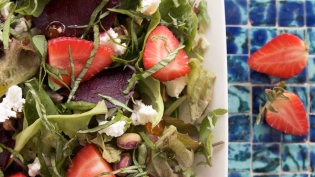Beets

Many years ago I took a train from Moscow to Beijing in late fall.
Beets grow below the soil and both the leaves and roots are edible. They have a truly earthy taste, and, like geodes, the outsides are plain—homely, even—but slice them open and you’ll find that beets come in a rainbow of startling colors. Beets deliver complex flavors—a bitter undertone paired with an intense sweetness coaxed out by roasting and, oddly enough, by adding acidity.
Popular in Eastern European cuisine, these cool-weather root vegetables are great for storage and add much-needed color to our fall and winter tables. Try golden beets for a milder earthiness, striped Chioggia beets in raw salads and dark red for roasting and pickling.
Selecting: Look for beets that are unblemished and firm. Tops (greens) should be full and fresh looking. Remove tops the day you purchase them and use within a day or two.
Eating: Raw, juiced, sautéed, boiled and roasted.
Storing: Beets can be stored in the refrigerator, unwashed and in covered containers, for two to three weeks. Beet greens will keep for two to three days.
Pairing: apples, arugula, basil, beans, beef, brown sugar, butter, cabbage, caraway seeds, carrots, cheese, chervil, chives, cilantro, citrus, cream, crème fraîche, cumin, curry, dill, eggs, fennel, feta cheese, garlic, ginger, goat cheese, greens, honey, horseradish, leeks, lemon, lemon thyme, lime, maple syrup, milk, mint, mustard, nutmeg, olive oil, olives, onion, orange, parsley, pasta, pears, pistachios, potatoes, radishes, rosemary, salt, shallot, sour cream, spinach, star anise, tarragon, thyme, vinegar, walnuts, white wine and yogurt.








